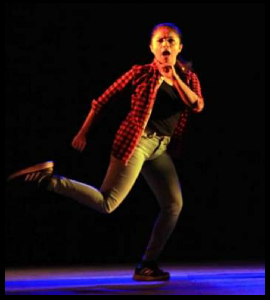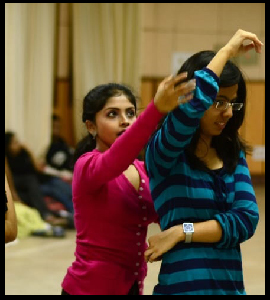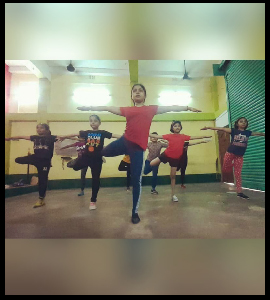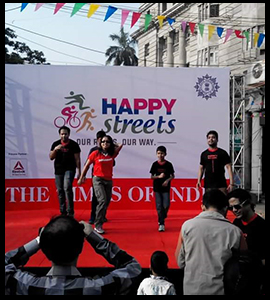SALSA
Salsa is a Spanish word meaning Sauce. But now-a-days, Salsa most commonly refers to a hybrid musical form based on Afro-Cuban music incorporating elements from other Latin American styles. It was largely developed in New York City in the beginning of 1940s and 50s, though it wasn’t labelled as Salsa until the 1960s when NYC’s music scene prompted the rapid success of it. Later in conjunction with the spread of Hispanic cultural identity, it attained a peak of popularity in 1970s. The roots of Salsa are in the ‘Son’, a rhythm pattern played with Clave and used to compose Salsa in combination with other Latin American styles primarily recorded by Puerto Ricans. Son is the central musical type in contemporary Cuban popular music and as a generic label has an extremely broad range of meaning. While Salsa achieved international fame during the second half of the 20th century, in Cuba, Son evolved into other styles such as Songo and Timba, the latter of which is sometimes known as “Cuban Salsa”.
Son Cubano is a genre of music and dance that originated in the highlands of eastern Cuba during the late 19th century. It is a syncretic genre that blends elements of Spanish and African origin. The subgenre of Son Cubano is known and widely used as Son Montuno.
Pioneered by the bandleader Arsenio Rodriguez, the Son rhythm became the framework on which was hung a wide variety of dance-oriented Afro-Cuban musical styles, from Bolero to Conga and from the Rumba to the Mambo. Afro-Cuban music was spread throughout Latin American countries, especially in Mexico. However, New York City became the forge for its transformation into Salsa in the beginning of 1940s with the contributions of the orchestra led by Cuban émigré Machito (Frank Grillo) which blended Afro-Cuban styles with Jazz and big band approaches. Another Cuban émigré, Celia Cruz became the reigning diva of Afro-Cuban dance music in the 1960s, as it evolved into Salsa with smaller ensembles comprising rhythm and horn sections and through huge contributions by a number of musicians of Puerto Rican heritage, most notably by bandleaders like Tito Rodriguez, Tito Puente (a virtuoso Timbale player and Vibraphonist) and Eddie Palmieri (a Pianist who brought progressive Jazz influences into the mix). Frequently but not always up-tempo, or ‘hot’, Salsa grew to incorporate increasingly diverse influences and performers – from Panamanian Activist-Singer-Songwriter Ruben Blades to Mexican American Rocker Carlos Santana. Although its international popularity crested in the 1970s, Salsa retained an audience and practitioner into the 21st century.
Clave (indispensable in composing Salsa music), Conga, Bongo, Timbales, Cowbell, Double-bass, Maracas, Trumpet, Guiro, Piano, Spanish Guitar, Marimbula, Botijuela, Horn, Cello, etc. are the music instruments widely used to compose Salsa music.
Clave is a Spanish word meaning ‘code’ or ‘key’ (as in key to a mystery or puzzle) or a ‘keystone’ (the wedge-shaped stone in the centre of an arch that ties the other stones together). But, in reference to Salsa, Clave is a percussion instrument consisting of a pair of short thick hardwood dowels used in producing bright clicking sounds at a certain interval in the Afro-Cuban music ensembles by striking one upon the other. The five-stroke Clave pattern can be played in two type of sequences such as 2-3 structure and 3-2 structure. Both creates, maintains and represents the structural core of Afro-Cuban rhythms in a variety of genres such as Abakua music, Rumba, Conga, Son, Mambo, Salsa, Songo, Timba and Afro-Cuban Jazz. The rhythm of Clave is considered as the most important tool for temporal organization of Afro-Cuban or Cuban music such as ‘Son’ and ‘Guaguanco’; it also creates the foundation of Reggae, Reggaeton and Dancehall. They are often used to play a repeating rhythmic figure throughout a piece by the player who strikes the dominant Clave in the centre of the resting Clave to resonate. Originated in sub-Saharan African music traditions, The Clave essentially serves the same function as it does in Cuba but, ultimately, these rhythms and vibrations embodies the diasporic transnational exchange to demonstrate a shared cultural experience and knowledge of its roots. Traditionally Clave sticks are made of wood, typically Rosewood, Ebony or Grenadilla but in modern times, they are also made of fiberglass or plastics.
The most common Clave pattern used in Cuban popular music is called the Son Clave, named after the Cuban musical genre of the same name. Clave is the basic period, composed of two rhythmically opposed cells, one antecedent and the other consequent. The antecedent half has three strokes and is called the three-side of clave while the consequent half of clave has two strokes and is called the two-side clave. In Cuban popular music, the first three strokes of Son Clave are also collectively known as Tresillo, a Spanish word meaning triplet i.e. three equal beats in the same time as two main beats.
The other main Clave pattern is the Rumba Clave which is the key pattern used in Cuban Rumba. Rumba Clave are also played both in duple-pulse and triple-pulse structures. The triple-pulse form of Rumba clave can be traced back to the iron-bell part in Abakua music. The 4/4 form of Rumba Clave is used in Yambu, Guaguanco and other popular music, However, there’s a debate as to how the 4/4 Rumba Clave should be notated for Guaguanco and Yambu. In actual, the third stroke on the three-side and the first stroke on the two-side often fall in rhythmic positions that do not fit neatly into music notations. Triple-pulse strokes can be substituted for duple-pulse strokes. Also, the clave strokes are sometimes displaced in such a way that they don’t fall within either a triple-pulse or a duple-pulse ‘grid’. Therefore, many variations are possible. When used in popular music such as Songo, Timba or Latin Jazz, Rumba clave can be perceived in either a 3-2 or a 2-3 sequence.
Salsa can be tagged as an umbrella term for sheltering many different genres, cultures and eras under it to evolve itself. Salsa as Dance essentially is a Street Latin form coming in a variety of different styles that one can opt to dance such as Cuban Salsa, Columbian Salsa (commonly known as Cali Salsa), Puerto Rican Salsa, New York Salsa (known as On2 Salsa), Los Angeles (LA) Salsa (known as On1 Salsa), etc. Elements and Steps from Cha Cha Cha, Afro-Cuban, Rumba, Samba, Hip Hop, even Acrobatics are used in Salsa in recent years. Salsa is the oldest and most famous among all the social dance forms namely Bachata, Mambo, Merengue, etc.
Cuban style of Salsa dancing is very popular worldwide and known as Casino dance in Cuba where it has originated back in 1950s. It can be danced with the partner, as a solo format (Salsa Suelta) and as a group dance called Rueda de Casino. Many of the Cuban Salsa figures are derived from Cuban Son, Cha Cha Cha and Danzon but these days it also incorporates body movements and styling from Cuban Rumba, Afro-Cuban, Mambo and, even, Reggaeton. Cuban Salsa goes on a circular motion where the dancers perform a lot of turn figures while travelling together in the circular dance space they share. A direct derivative of this style is the Miami Salsa dance style, developed by Cuban immigrants in Florida.
The Colombian style Salsa, commonly known as Cali style Salsa or Salsa Calena, is also a circular style of Salsa dancing just like Cuban Salsa but Cali Salsa is characterized by fast footwork while the upper body remains fairly rigid. The footwork is intricately syncopated and includes skipping steps which is unique to this style. Colombian Salsa originates in Cali, an important city in Colombia and is extremely popular almost like a national sport. Its chief dance influences are Cumbia (a traditional dance from Colombia), Pachanga and Boogaloo.
The New York Salsa dance style is also known as On2 Salsa. Originated in New York City, it has been popularized by Mr. Eddie Torres. Just like the LA style, NY Salsa is also a linear style of Salsa dancing and generally argued as more musical, smoother & groovier than the former because it more closely aligns with the Tumbao and Clave, two important musical patterns found in Salsa music. It is usually danced with the break step taken on the 2nd beat of the measure, hence called On2 Salsa. This style of Salsa is also sometimes called Mambo mainly because the style of the music that was mainly danced to was Mambo music, but it bears little connection to the original Mambo dance from Cuba.
Los Angeles style of Salsa is also known as LA style Salsa is one of the most common styles of Salsa danced in North America and throughout the world. Originated in Los Angeles, LA style Salsa is dance in a slot (or line), hence is a linear style of Salsa dancing like NY Salsa. It is always danced On1 i.e. the dancers do the break step on the first count of the measure or the musical phrase. This is the reason why many people refer to this style as ‘On1 Salsa’ although this designation is incorrect as the timing of the phrase per se do not dictate a style and several other styles such as Cuban, Puerto Rican and Colombian styles also use the same timing. LA style Salsa has many Latin influences from Latin Hustle, Swing and Latin Ballroom and its presentation tends to prefer big flashy lifts and tricks. Albert Torres, Francisco & Luis Vasquez, Alex De Silva, Josie Neglia are some of the names often credited with early development and popularization of LA style Salsa dancing.
In current world Salsa scene, Alien Ramirez, Oliver Pineda, Fernando Sosa, Jhonny Vasquez (commonly known as the Prince of On1 Salsa), Adolfo Indacochea (considered as the Prince of On2 Salsa), Tania Cannarsa, Juan Matos (the Pachanga King), Frankie Martinez, Wilmer-Maria, are world class teachers and outstanding performers to name a few. On the other hand, Magna Gopal, Terry Tauliaut, Edie ‘The Salsa Freak’, Griselle Ponce, Maykel Fonts and many are incredible social dancers. Goes without saying that Mr. Eddie Torres is the most important figure for the Salsa World and the God Father of all contemporary Salsa dancers, dancing for nearly five decades and still going strong. He is the Mambo King and definitely the mostly respected living legend of present time Latin Dance scene.
Tropical Gem, Yamulee Dance Company, Dominican Power, Omambo, Salsamania, etc. are hugely appreciated and successful Salsa Repertories of the globe. Tropical Gem headed by Fernando Sosa is probably the world’s best hyped Salsa troupe because of its unique choreography, absolute coordination, presentational grandeur and seamless performance.
At the same time, Alien Ramirez, Oliver Pineda, Delia Madera, Mario Acosta Cevallos, David-Paulina, Ricardo-Karen, Simone-Serena, Carine-Rafael, are extremely talented artistes and multiple-times World Champions in Salsa On1 & Salsa On2 divisions in Professional Solo and Couple categories of World Salsa Summit, World Latin Dance Cup, Euroson Latino World Salsa Championship, etc. Alien Ramirez is the sole record holder of becoming 24X World Champion while Oliver Pineda is 9-times World Champion; both being extraordinary master-trainers and their expert coaching is always sought after by dancers world-wide who intend to become professional or compete in championships.





